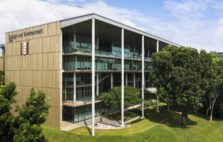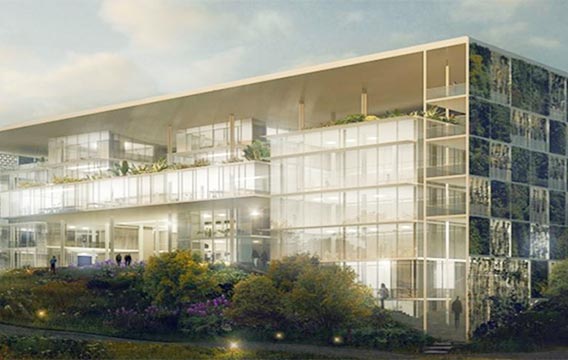Joy Gai Jiazi
Designation
Principal Engineer, Sustainable Urban Solutions

Joy is a Singapore Green Mark Manager, Singapore Certified Energy Manager, US LEED Accredited Professional and Malaysia Green Building Index Facilitator.
She joined Surbana Jurong in 2008. Having obtained these qualifications and experiences, she has gained holistic view of how the green and sustainable industry is evolving today, and she is continually exploring new ideas to enhance the sustainability services. Joy is also regarded as one of the pioneers in the sustainable building design industry, and a design “optimizer”. She is also one of the key team group lead for NUS SDE4.
Introduction Amidst growing concerns about rising energy prices and the impact of climate change, it is important to know that buildings in Singapore constitute to high energy consumption year on year. This fact underpins the significance of targeting building energy use as a key to decreasing the nation’s energy consumption.
see moreProjects
Joy Gai Jiazi
Designation
Principal Engineer, Sustainable Urban Solutions

Joy is a Singapore Green Mark Manager, Singapore Certified Energy Manager, US LEED Accredited Professional and Malaysia Green Building Index Facilitator.
She joined Surbana Jurong in 2008. Having obtained these qualifications and experiences, she has gained holistic view of how the green and sustainable industry is evolving today, and she is continually exploring new ideas to enhance the sustainability services. Joy is also regarded as one of the pioneers in the sustainable building design industry, and a design “optimizer”. She is also one of the key team group lead for NUS SDE4.
净零能耗建筑要求建筑全年产出的可再生电能要高于建筑全年的耗电量。在新加坡电网稳定的环境下,可再生能源可以直接送入电网。建筑通过输入和输出电源来验证是否达到净零能耗的标准。虽然国际上对净零能耗建筑的定义有几个标准,但是普遍认可的定义为可再生能源要全部从建筑的基地范围内产出。 净零能耗建筑的挑战在于建筑的运行模式与限高。在新加坡,可以稳定利用的可再生能源是太阳能,因此在有限的屋顶面积前提下,越高层的建筑将会越难达到零能耗。迄今为止,亚热带气候环境下,运行空调系统的最高层零能耗建筑则是新加坡国立大学第四号教学楼 – NUS SDE4。 这栋大楼由盛裕联合国际建筑机构思锐建筑事务所(Serie Architects)和新加坡的Multiply Architects建筑事务所合作设计,由德国Transsolar Energietechnik GmbH担任能源顾问。是一幢净零能耗建筑,不仅预计能在二十年内通过太阳能生产出建筑全年消耗的所有能源,还能在前十年的运营中生产更多能源。建筑总面积8千多平方米,一共有6层。于2018年9月竣工。是为下一代设计师们打造的“未来”建筑。 净零能耗建筑的设计要从最大化发挥被动式设计开始,从源头减少能耗。在此建筑中体现的主要是屋顶、外围护与遮阳设计的有效融合,中庭自然通风的设计、室内自然采光和眩光的分析与优化。零能耗建筑对建筑主动设计的要求则极高,不仅在设备设计中达到最优、最高效,还需要挑战传统的设计。在这栋建筑里,我们的设计师挑战了传统的空调送风系统。在美国ASHRAE定义室内舒适度PMV的指导下,设计中加入了风扇来提高室内风速,通过增加吹风感来提高舒适度,由此,空调则可以适当把送风温度上调,从而达到节能的目的。另外,风扇在傍晚房间没有空调的时候也起到辅助自然通风的作用。建筑在设计期间还设置了混合通风系统的测试样板间,来详细测试不同风扇和不同风速下房间通风的分布情况。 净零能耗建筑将建筑耗能降到最低之后,还需要最大程度的增加可再生能源的潜力来满足能源的平衡。此建筑屋顶设计为最大化的放置太阳能板,甲方并与太阳能板公司签署了长达十年的维护和性能担保合同。由于考虑到太阳能板的逐年衰退率,在设计中是根据预计第十年的太阳能产量作为零能耗的标准。 NUS SDE4也是一个智能的建筑,传感器的优化布局让系统了解房间的使用情况,从而最优化的运行。每个窗口也安装有传感器,一旦在空调环境下开窗,空调则会相应关闭,房间的显示装置会提醒已经打开的窗口位置。 NUS SDE4结合了市场最先进的设备与概念,希望为新加坡零能耗、低能耗的目标打造一个优秀的基础和平台。
see moreProjects




